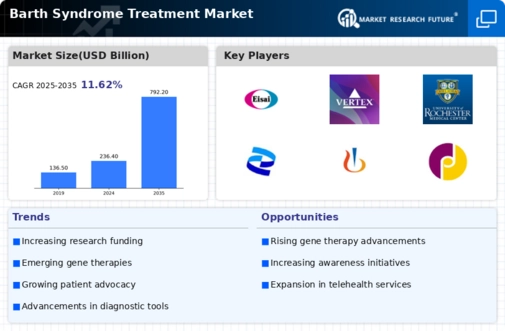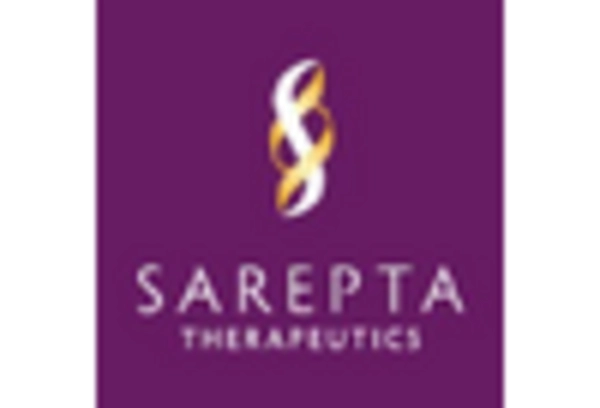Supportive Regulatory Frameworks
Supportive regulatory frameworks play a pivotal role in shaping the Barth Syndrome Treatment Market. Regulatory agencies are increasingly recognizing the need for expedited pathways for rare disease treatments, which can significantly reduce the time and cost associated with bringing new therapies to market. Initiatives such as orphan drug designations and fast-track approvals are likely to encourage pharmaceutical companies to develop treatments for Barth Syndrome. This supportive environment may lead to a more robust pipeline of therapies, ultimately benefiting patients. As regulatory bodies continue to streamline processes, the market could see an influx of innovative treatment options that address the unique challenges posed by Barth Syndrome.
Advancements in Therapeutic Options
The Barth Syndrome Treatment Market is experiencing a surge in advancements in therapeutic options, which is a significant driver of market growth. Recent developments in gene therapy and enzyme replacement therapy have shown promise in addressing the underlying causes of Barth Syndrome. For instance, innovative approaches targeting mitochondrial dysfunction are being explored, potentially leading to more effective treatments. The market is projected to witness a compound annual growth rate of approximately 8% over the next five years, driven by these advancements. As new therapies emerge, they may not only improve patient quality of life but also attract investment from biopharmaceutical companies eager to capitalize on unmet medical needs.
Increasing Awareness of Barth Syndrome
The rising awareness of Barth Syndrome among healthcare professionals and the general public is a crucial driver for the Barth Syndrome Treatment Market. Educational campaigns and advocacy efforts by patient organizations have contributed to a better understanding of the disease. This heightened awareness is likely to lead to earlier diagnosis and treatment, which could enhance patient outcomes. As more individuals become informed about the symptoms and implications of Barth Syndrome, the demand for effective treatment options is expected to grow. Furthermore, the increasing visibility of rare diseases in medical literature and conferences may encourage pharmaceutical companies to invest in research and development, thereby expanding the treatment landscape for Barth Syndrome.
Rising Patient Advocacy and Support Groups
The emergence of patient advocacy and support groups is significantly influencing the Barth Syndrome Treatment Market. These organizations are instrumental in raising awareness, providing resources, and fostering community among affected individuals and families. Their efforts often lead to increased funding for research and development, as well as greater visibility for Barth Syndrome within the healthcare system. As these groups continue to advocate for better treatment options and support services, they may drive demand for innovative therapies. The presence of strong advocacy networks is likely to encourage collaboration between stakeholders, including researchers, healthcare providers, and pharmaceutical companies, ultimately enhancing the treatment landscape for Barth Syndrome.
Growing Investment in Rare Disease Research
The Barth Syndrome Treatment Market is benefiting from a growing investment in rare disease research, which serves as a key driver for market expansion. Increased funding from both public and private sectors is facilitating the exploration of novel treatment modalities. Research institutions and biotechnology firms are collaborating to investigate the genetic and biochemical underpinnings of Barth Syndrome, which may lead to breakthroughs in treatment. The market is likely to see a rise in clinical trials aimed at evaluating new therapies, with an estimated 15% increase in trial activity over the next few years. This influx of research initiatives could enhance the understanding of Barth Syndrome and pave the way for effective therapeutic interventions.

















Leave a Comment